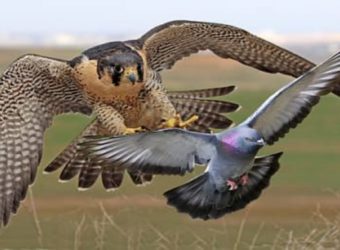How to Hunt: A Hawk’s Eye View
The first thing I noticed was the hawk, a small Red-tail perched on the back of a bench in Croton Point Park. It’s so unusual to spot one close-up at eye level that I stopped for a closer look.
The second thing I noticed was that the bird was paying no attention to me. Instead, it was twisting its head around to peer up into a leafy oak nearby. As I watched it flew up into the tree and began to clamber around in the branches, awkwardly flapping its wings for balance, looking back and forth with its piercing dark eyes.
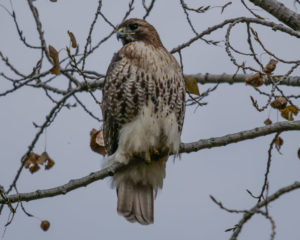
It took me a minute to figure out what the hawk was doing: It was hunting a young squirrel. For the next fifteen minutes, and in complete silence, the two of them played a deadly game of hide and seek, the squirrel trying to keep branches or the trunk between them, the hawk lumbering around after it.
The hunt was still underway when I had to leave, so I’ll never know who prevailed. Having watched the silent contest, though, I wanted to learn more. How many different hunting techniques do birds of prey employ?
The short answer: A lot. It turns out that there are nearly as many hunting strategies as there are raptors, and some of them are pretty spectacular.
Here are a few:
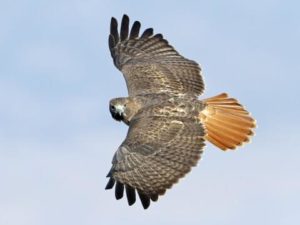
Eyes in the Sky
When we see a hawk soaring in circles high overhead, we can easily imagine that it is searching for its next meal. In reality, though, hawks most often use this kind of soaring to get from place to place, stake out and defend territory, and court their mates.
Some hawks—mostly bigger, open-country species—do hunt while soaring high above. Red-tails, for example, feed on animals as large as rabbits, pheasants, and full-grown snakes, prey that is easily spotted from far above and that can be followed as the bird dives towards it. But most raptors (and often Red-tails themselves) rely on other approaches.
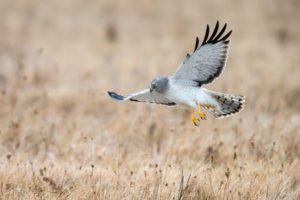
Close Inspection
While high soaring gets most of the attention, many hawks instead cruise low over the ground, sometimes just a few feet above a meadow or hilltop. Northern Harriers can sometimes be seen doing this at Croton Point as they hunt for the rodents and other small mammals they eat.
The disadvantage of this technique, of course, is that the prey animal is likely to spot the hawk sooner at close range. However, this is also an advantage for the hawk: Many small creatures’ only defense is to freeze in place, but that’s not so easy when a predator approaches within a few feet. A startled small bird or animal is likely to try to flee, calling attention to itself. Having flushed its prey, the hawk won’t have much distance to cover to gain its prize.
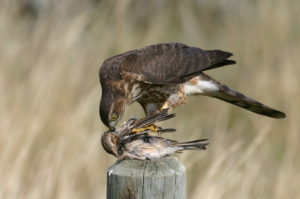
No Escape
One snowy morning a few years ago, I witnessed a breathtaking feat of hunting skill just outside my front door. I noticed that the birds in and around my feeder were completely still, a sure sign that there was a raptor nearby. Sure enough, a moment later a Sharp-shinned Hawk came winging in and perched on the low, snow-covered hedge that bordered the walk.
As I watched, the little hawk stuck its head down through the crust of snow to survey the branches below. Then it plunged downward, disappearing completely.
I held my breath. A moment later the Sharp-shin re-emerged at least ten feet away from where it had disappeared, shedding snow and clutching a sparrow in its talons. Somehow it had maneuvered at high speed through the tangled branches to grab its prey, which it now took to a higher branch and began to eat.
That’s the thing about the Sharp-shin and its larger relatives, including the Cooper’s Hawk and Northern Goshawk in North America: They’re astonishingly agile, designed to chase and capture birds through the forest canopy. The chase and capture I witnessed was just part of a day’s work for a Sharp-shin.
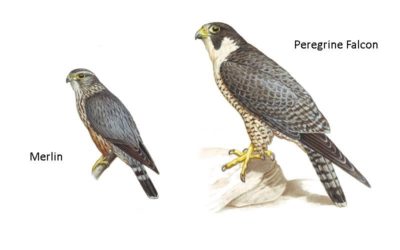
Pure Power
Since they show up in the same places and hunt similar prey, most of us think that falcons and hawks must be closely related. But it turns out they’re not: While both groups belong to the class Aves (as do all birds), they split off just one classification level further down: Hawks to the order Accipitriformes, falcons the order Falconiformes. (Cats and seals, for example, are much more closely related to each other than are hawks and falcons.)
A close look reveals that the two groups of raptors also rely on very different hunting techniques. Unlike most hawks, falcons like the Peregrine and Merlin use their nearly unbelievable speed and great strength to pursue and catch the birds they target.
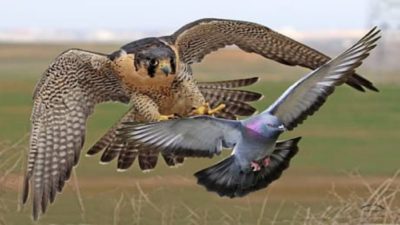
I’ve witnessed a falcon pursuit, and it was a stunning sight. My wife and I were standing on a balcony overlooking New York City’s East River as a Peregrine took off from a windowsill high above us. As we watched, the bird stooped on a flock of pigeons flying on the other side of the river, folding its wings close to its body and allowing gravity, wind, and its own aerodynamic shape to increase its speed.
At its fastest, the Peregrine we watched may have reached 150 miles per hour—or even more—before slamming into the fleeing pigeons like a missile. Peregrines in mid-stoop have been known to exceed 200 mph, making them by far the fastest animal on earth, with the impact of their strike usually killing their target at once.
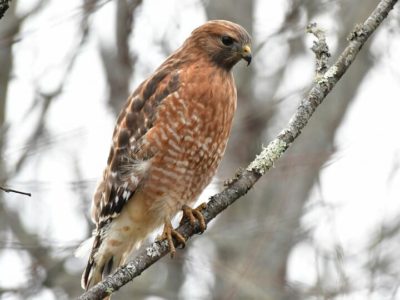
Sit and Wait
This may not be as spectacular a hunting technique as the Peregrine’s stoop and strike, but it’s certainly efficient. A hawk (such as Red-tailed or its close cousin, the Red-shouldered Hawk) will perch on a well-situated high branch with a clear view of an adjacent field or meadow. Then it will become part of the scenery, sitting still while gazing down with its sharp eyes until nearby squirrels, rabbits, or pheasants have simply forgotten it’s there.
Once a likely meal has wandered into view, the hawk will simply plunge from the tree, grab its unwary prey, and return to the branch to feed.
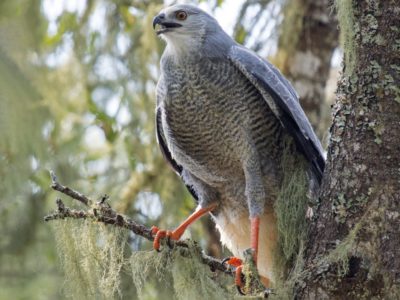
Clambering
Have you noticed yet that none of the hunting strategies I’ve described so far match the one that led to this article: The Red-tailed Hawk hunting the squirrel through the branches of a leafy tree? That’s because most hawks never hunt this way.
In fact, I’ve found just a couple of species that regularly climb around trees in search of prey. One of them is the Crane Hawk, which is native from Mexico to Central and South America.
But there’s a crucial difference: Unlike Red-tails, Crane Hawks are ideally suited to capture their chosen prey, the reptiles and small birds and mammals that live in the trees where they hunt. They have unusually long legs, perfectly designed for reaching into and exploring knotholes, old woodpecker nest holes, and crevices. Remarkably, their legs are also double-jointed, bending both forward and back so the bird can reach every corner of their prey’s hiding place.
The Red-tail I watched, on the other hand, had none of these advantages. My guess is that it was a young hawk, and the next time it was hungry it did what its size, shape, and heritage demanded: It soared across the sky…or sat on an exposed branch and waited for its next meal to approach.
Copyright © 2021 by Joseph Wallace
